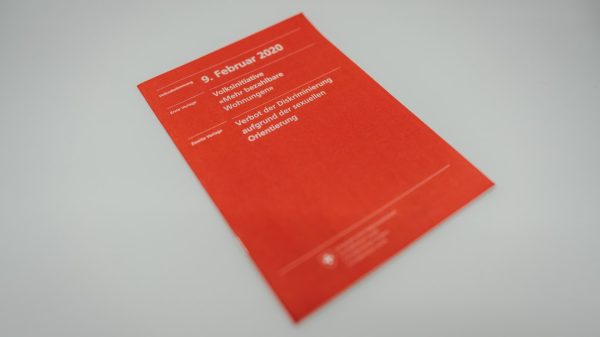WordPress powers a significant portion of the web, making it a frequent target for cybersecurity threats. While there are many layers to hardening a WordPress site, one often overlooked yet effective measure is setting up password expiration rules. Enforcing password changes at regular intervals helps minimize risks from compromised credentials and significantly enhances the overall security posture of your website.
By default, WordPress does not include password expiration functionality. However, with the right plugins and configurations, you can implement this feature effectively. In this article, we’ll take a deep dive into how to set password expiration rules in WordPress, the tools you can use, and best practices to follow for keeping your login credentials secure over time.
Why Password Expiration Matters
You might ask, “Isn’t a strong password enough?” While using complex passwords is essential, even strong passwords can be leaked or stolen. Frequent password changes reduce the amount of time a compromised password could be useful to an attacker. With password expiration rules, you enforce a cycle of renewal that ensures old or leaked credentials can’t be reused indefinitely.
Some of the benefits of setting password expiration include:
- Limiting the impact of credential leaks.
- Encouraging better password hygiene among users.
- Meeting industry standards and compliance for security.
- Preventing stale account misuse, especially for sites with multiple users or contributors.

Implementing Password Expiration in WordPress
Since WordPress doesn’t include this feature out of the box, you’ll need to use plugins to achieve password expiration functionality. Let’s go through a few methods that can help you accomplish this.
1. Using a Dedicated Password Expiry Plugin
One of the easiest ways to implement password expiration is to use a plugin specifically built for this purpose. Some dependable options include:
- Expire User Passwords
This simple plugin forces users to change their password after a defined period (e.g., 30, 60, or 90 days). It works with standard WordPress login systems and even sends reminders when a password is about to expire. - WP Password Policy Manager
This plugin comes with a range of features including password expiry, complexity rules, and password reuse prevention. It’s great for sites that demand strict security. - Shield Security
While Shield is a multipurpose security plugin, it includes strong user password policies like forced expiration and change enforcement during login.
After installing your chosen plugin, go to its settings and define how many days a password lasts before it expires. Typically, this is set between 60 to 90 days, depending on how sensitive your website’s content is.
2. Custom Coding for Advanced Control
If you’re managing a highly customized site or working with developers, you might choose to hard-code your password expiration logic. This method is more complex but offers full control. Here’s a simplified overview of how it can be implemented:
- Add a user meta field, such as
last_password_reset, that stores the timestamp when a user last changed their password. - Use the
login_formorwp_loginaction hooks to check the time difference between the current date and thelast_password_resettimestamp. - If the defined time period (e.g., 90 days) has passed, redirect the user to a password change screen with a message enforcing the update.
This technique gives you flexibility but comes with the responsibility of handling logic, notifications, and user experience.
Configuring Role-Based Expiry Rules
An advanced feature to consider is setting different expiration periods depending on the user’s role. For example, administrators and editors may require more frequent password changes due to their elevated privileges, while subscribers may have a longer window.
Most premium plugins offer this level of granularity. For instance, WP Password Policy Manager lets you apply different rules for different user roles, helping ensure tighter security for sensitive positions without burdening general users unnecessarily.
Setting Up Notifications for Upcoming Expirations
Reminding users before their password expires is a key usability step. Not all plugins handle this the same way, so check if your chosen tool supports email reminders. Ideally, users should get a notice at least one week before that lets them act proactively. This avoids being locked out and keeps morale high when using your platform.

Enforcing Password Strength Alongside Expiry
Password expiration is only part of the equation. If users reset their credentials to “password123” every month, the expiration rule becomes pointless. Combining expiration with complexity rules is highly recommended. Use plugins that support the following features along with password expiry:
- Minimum password length (e.g., 12 characters)
- Mandatory inclusion of numbers, symbols, uppercase, and lowercase letters
- Prevention of previously used passwords
Some plugins also integrate with third-party services like Have I Been Pwned to ensure new passwords aren’t already listed in previous data breaches.
Testing and Monitoring User Experience
Once you’ve implemented password expiration rules, conduct internal tests before rolling them out site-wide. Create test users with various roles and ensure that expiration prompts, redirection, and password reset flows work as intended.
Also, be ready for user support requests. Provide clear documentation or FAQ sections explaining:
- Why password expiration is in place
- How to reset the password when prompted
- What to do if they are locked out
A little communication goes a long way in making this security measure user-friendly and acceptable.
Best Practices to Follow
Below are some best practices to ensure your password expiration policy is effective without being disruptive:
- Don’t make the period too short: Changing passwords too frequently can lead to password fatigue, causing users to pick weaker passwords.
- Combine with multi-factor authentication: MFA adds another layer, making it harder for attackers even if passwords are compromised.
- Audit logs: Use tools to track password changes and login attempts for at-risk accounts.
- Allow grace periods: Give users a buffer before being locked out to ensure smoother transitions.
Wrap-Up
Securing your WordPress site involves more than just firewalls and hosting choices—it begins with user access. Implementing password expiration rules is an important step toward better protection and accountability for everyone accessing your site.
Whether you use a plugin or create a custom solution, adding password expiration will raise the security bar and safeguard your content from unauthorized access. With a careful approach, supportive user messaging, and intelligent configuration, you can enhance security without creating friction for your users.
Now is the perfect time to strengthen your login processes and future-proof your WordPress site from preventable threats. Password expiration may be a small setting, but its impact is far-reaching.


































